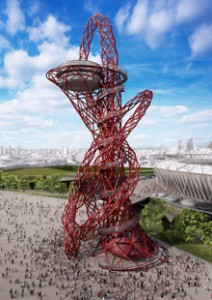 The old and new are crashing in on eachother in London these days.
The old and new are crashing in on eachother in London these days.
It’s the 200th anniversary of Charles Dickens’ birth and all the squalid, dank details of the Victorian underbelly are being celebrated, in a way. There is a big exhibit at the British History Museum, for example, but the Charles Dickens Museum, installed at the home in Bloomsbury where he lived in work, closed this week – and will remain closed for the rest of the year.
It’s an odd thing to happen for the bicentennial, but as a hasty notice on the door says, it’s best to close now since there’s so much Dickens being presented elsewhere.
Over in East London, in the former Docksland, there are the occasional reminders of the past – old factories, and a bar that Dickens frequented, The Grapes. But there is also are a number of angled modernist apartment buildings and, down on the former Isle of Dogs, a sleek and sterile banking center of skyscrapers.
The East End has been visited by a umber of disasters over the years – a number of Cholera outbreaks, the poverty of the factories and their poor conditions, and the bombardments of World War II aiming for the docks but hitting all the housing complexes.
Now there is a newer wave in the form of the Olympics 2012.
Work continues on a vast Olympic Village in the East End, settled amid the industrial past. The sleek stadium and surrounding areas shine in sharp contrast to the old bricks and pubs visitors will pass to attend in July.
The concentration stretches down to Greenwich across the Thames and up to Victoria Park, which is being fixed up in anticipation of the games.
Locals are taking the Underground over to sneak a peak at the big stadium the V-shaped roof of the aquatics center and the confounding scribble of a tower marking the locale.
The 376-foot ArcelorMittal Orbit, as it is called, which incorporates the five Olympic rings in the tangled lattice, is designed by Anish Kapoor and structural engineer Cecil Balmond.
Visitors can see it now from a spot called Tube View reached from the local station and through a labyrinth of walkways set gingerly between construction sites. And as man people are coming to peek now, it’s tough to imagine the estimated 1 million that will trod these roads this summer.
Though the new stadium may not have the design impact as China’s “bird’s nest” did four years ago, the intent is the same: To reveal to the world a dynamic city right in the place that is also being celebrated this year for its Victorian-era squalor.
And whether the structures will find a use after the athletes leave, or will remain white elephants in an empty area may be the subject of a Charles Dickens of the future.